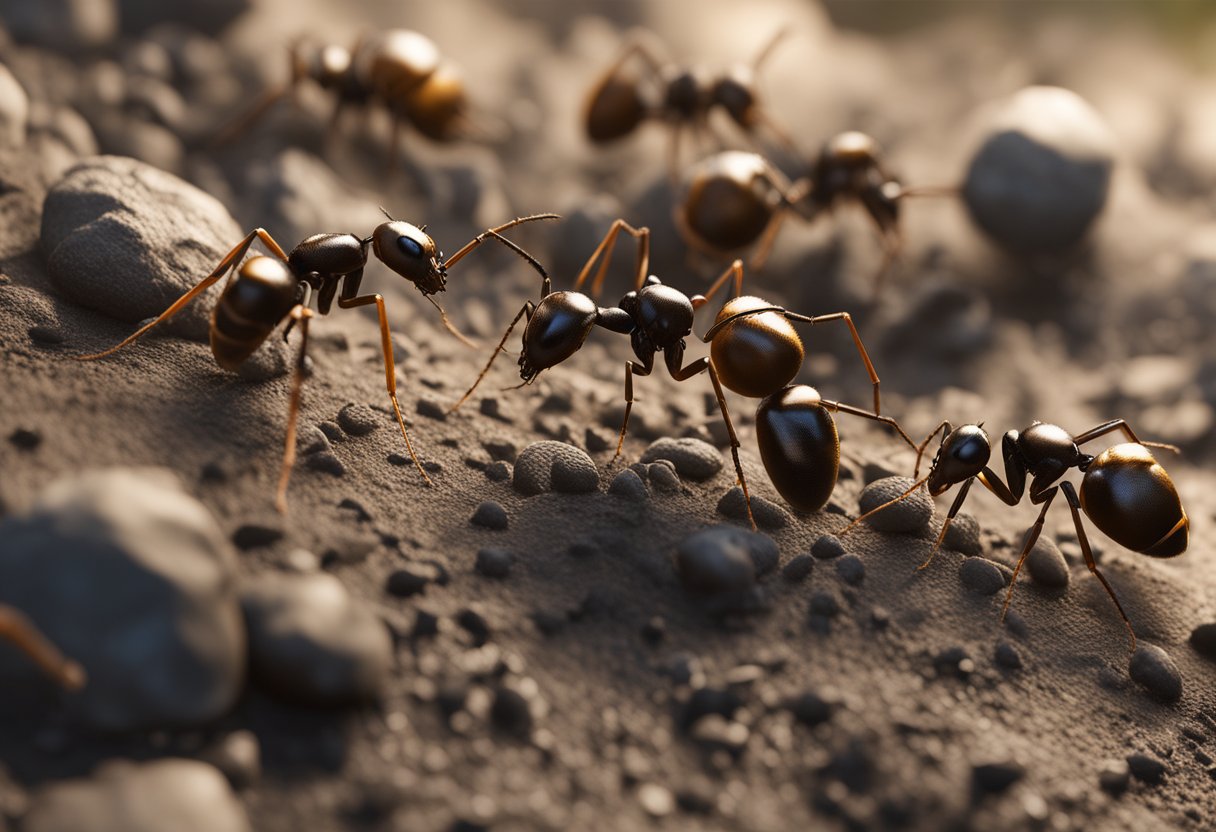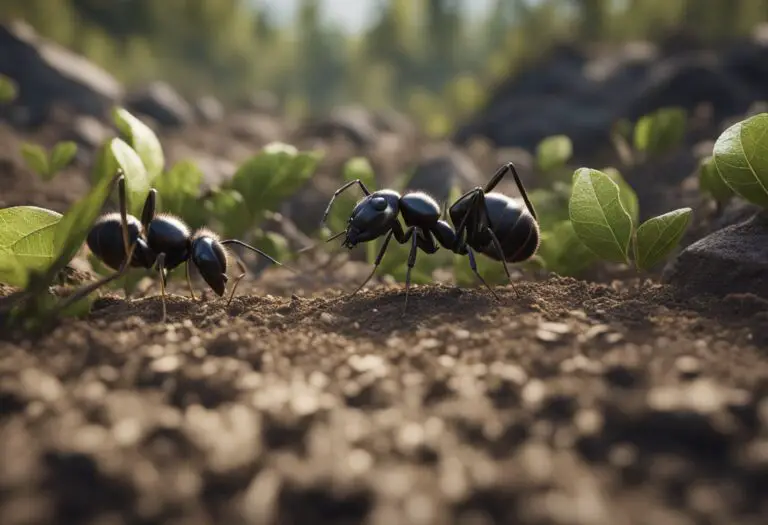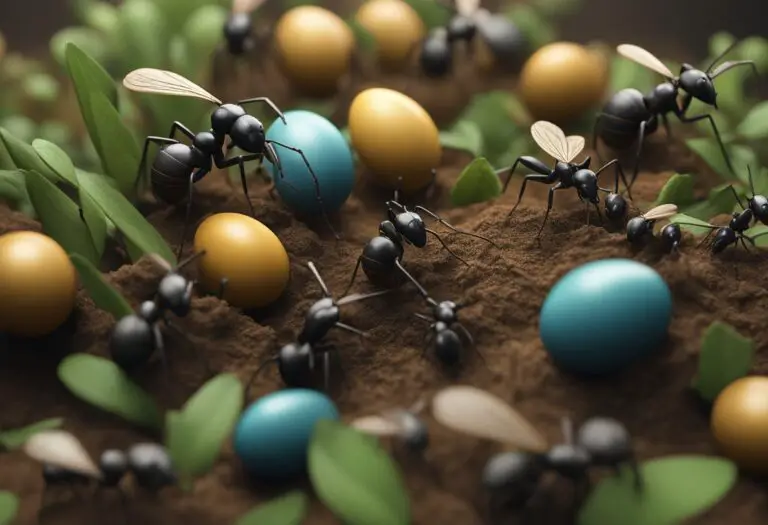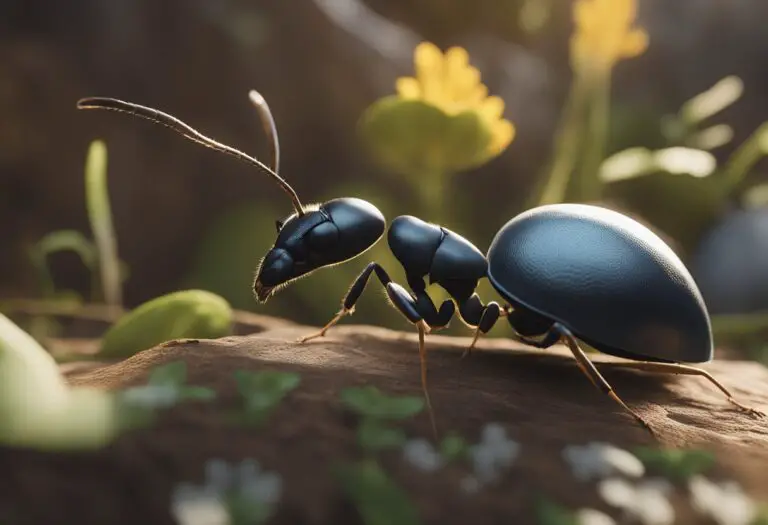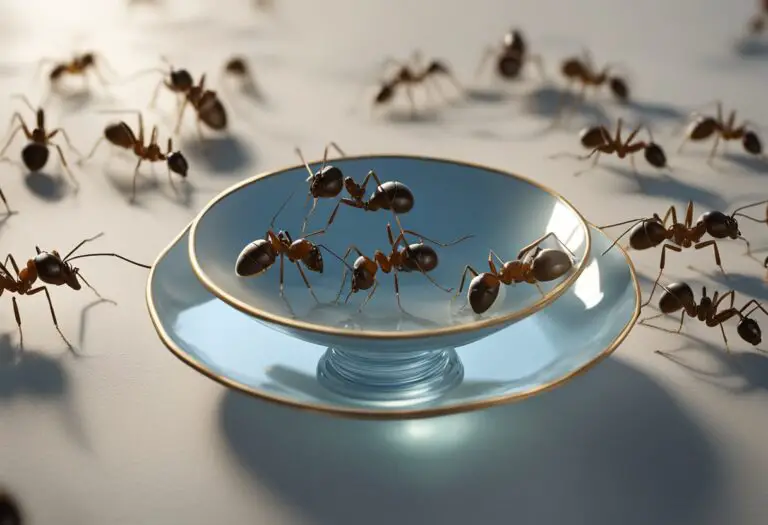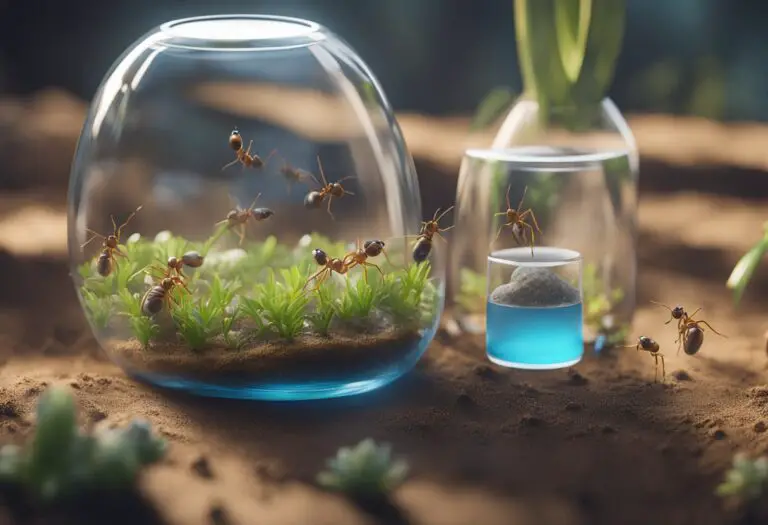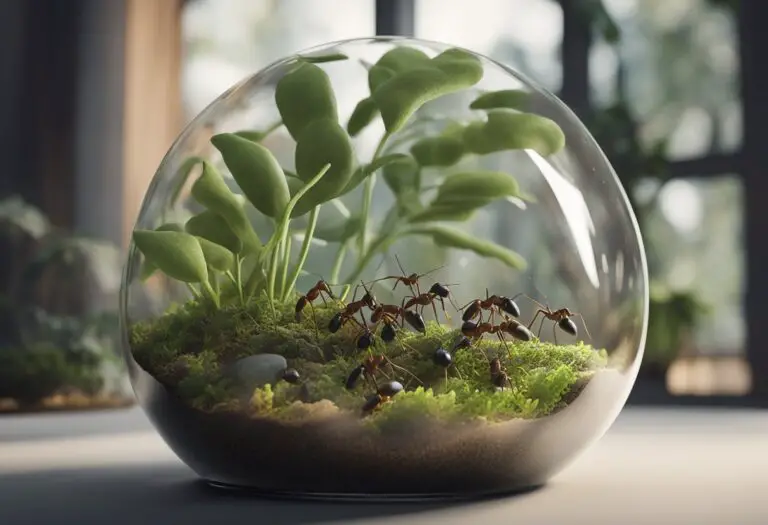What are the Common Health Issues in Captive Ant Colonies? A Comprehensive Guide
Ants are fascinating creatures that are known for their impressive social organization and cooperation. In the wild, ants live in colonies that can range in size from a few dozen to millions of individuals. However, many people also keep ants as pets or for scientific research in captivity. While captive ant colonies can be fascinating to observe, they can also be vulnerable to a range of health issues that can impact the well-being of the colony as a whole.
One of the most common health issues in captive ant colonies is disease. Just like any other animal, ants are susceptible to a range of bacterial and fungal infections that can spread quickly through a colony. In addition, captive ant colonies may be more vulnerable to disease due to factors such as overcrowding or poor hygiene. Identifying and treating diseases in captive ant colonies can be challenging, as many ant species are highly social and may not respond well to interventions that disrupt their social organization.
Another health issue that can impact captive ant colonies is malnutrition. Ants have specific dietary requirements that must be met in order for them to thrive. In captivity, it can be difficult to provide ants with a varied and nutritionally balanced diet, which can lead to health problems over time. In addition, some ant species may have specific dietary needs that are difficult to meet in captivity, which can further complicate the issue. Overall, understanding the common health issues that can impact captive ant colonies is essential for anyone who keeps ants as pets or works with them in a scientific setting.
Nutritional Deficiencies

Captive ant colonies are prone to nutritional deficiencies due to their limited diet. Nutritional deficiencies can lead to a variety of health issues, including reduced lifespan, decreased reproductive success, and weakened immune systems.
Protein and Carbohydrate Imbalance
Protein and carbohydrate imbalances are common in captive ant colonies. Ants require a balance of protein and carbohydrates to maintain optimal health. A diet that is too high in carbohydrates can lead to weight gain and decreased protein intake, which can result in reduced immune function and reproductive success. On the other hand, a diet that is too high in protein can lead to decreased carbohydrate intake, which can result in reduced energy levels and decreased longevity.
Vitamin and Mineral Shortages
Vitamin and mineral shortages are also common in captive ant colonies. Ants require a variety of vitamins and minerals to maintain optimal health. Vitamin and mineral deficiencies can lead to a variety of health issues, including weakened immune systems, decreased reproductive success, and reduced lifespan.
To prevent nutritional deficiencies in captive ant colonies, it is important to provide a varied diet that includes a balance of protein, carbohydrates, vitamins, and minerals. This can be achieved by offering a variety of food sources, such as fruits, vegetables, and protein-rich foods like insects or meat. Additionally, it is important to supplement the diet with a high-quality ant food that is specifically formulated to meet the nutritional needs of captive ant colonies.
Environmental Stressors

Ant colonies in captivity are susceptible to various environmental stressors that can impact their health and well-being. The following subsections will explore some of the most common environmental stressors that captive ant colonies may face.
Inadequate Space
One of the most significant environmental stressors for captive ant colonies is inadequate space. Ants require a certain amount of space to move around, forage, and establish their nests. When kept in small or cramped spaces, ants may become stressed, which can lead to a range of health issues.
To prevent inadequate space from becoming a problem, ant keepers should ensure that their colonies have enough room to move around and expand. Additionally, it’s essential to provide adequate nesting space and to avoid overcrowding the colony.
Improper Temperature and Humidity
Ants are highly sensitive to changes in temperature and humidity. If the temperature or humidity levels in their environment are not within the appropriate range, ants may become stressed, which can lead to a range of health issues.
To prevent temperature and humidity-related stress, ant keepers should ensure that their colonies are kept in an environment with stable temperature and humidity levels. This can be achieved through the use of heating or cooling devices, as well as by maintaining proper ventilation.
Lack of Cleanliness
A lack of cleanliness can also be a significant environmental stressor for captive ant colonies. Ants require a clean environment to thrive, and if their living space is dirty or contaminated, they may become stressed, which can lead to a range of health issues.
To prevent a lack of cleanliness from becoming a problem, ant keepers should ensure that they regularly clean and maintain their colonies’ living space. This can include removing waste and debris, as well as regularly replacing the colony’s substrate.
Overall, environmental stressors can have a significant impact on the health and well-being of captive ant colonies. By understanding and addressing these stressors, ant keepers can help ensure that their colonies remain healthy and thriving.
Diseases and Parasites

Ant colonies in captivity are susceptible to various diseases and parasites that can cause harm to the colony. In order to maintain a healthy and thriving ant colony, it is important to be aware of these potential threats and take preventative measures.
Fungal Infections
Fungal infections are a common problem in captive ant colonies. These infections can be caused by a variety of fungal species, including Aspergillus and Metarhizium. Symptoms of a fungal infection may include discoloration or decay of the brood, as well as a foul odor.
To prevent fungal infections, it is important to maintain a clean and dry environment for the ants. Regular cleaning of the nest and removal of any decaying matter can help prevent the growth of fungi. Additionally, providing proper ventilation and avoiding overcrowding can also help prevent fungal infections.
Bacterial Diseases
Bacterial diseases can also pose a threat to captive ant colonies. These diseases can be caused by a variety of bacterial species, including Pseudomonas and Streptococcus. Symptoms of a bacterial infection may include lethargy, loss of appetite, and discolored or decaying brood.
Preventing bacterial infections in ant colonies can be challenging, as many bacterial species are ubiquitous in the environment. However, maintaining a clean and dry environment, avoiding overcrowding, and providing a balanced diet can help prevent the spread of bacterial infections.
Mite Infestations
Mite infestations are another common problem in captive ant colonies. Mites can feed on the ants and their brood, causing harm to the colony. Symptoms of a mite infestation may include lethargy, loss of appetite, and a decrease in brood production.
To prevent mite infestations, it is important to maintain a clean and dry environment for the ants. Regular cleaning of the nest and removal of any decaying matter can help prevent the growth of mites. Additionally, avoiding overcrowding and providing a balanced diet can also help prevent mite infestations.
Genetic Issues

Inbreeding Consequences
Inbreeding is a common issue in captive ant colonies that can lead to a variety of genetic problems. Inbreeding occurs when closely related ants mate, leading to a reduction in genetic diversity within the colony. This can result in a higher incidence of genetic disorders and a decrease in overall fitness.
One consequence of inbreeding is reduced immunity to disease. Inbreeding can lead to a decrease in the number of alleles, or versions of genes, within a population. This can result in a decreased ability to fight off diseases and parasites. Inbreeding can also lead to an increase in the expression of deleterious recessive traits, which can further reduce the fitness of the colony.
Another consequence of inbreeding is reduced reproductive success. Inbreeding can lead to a decrease in the number of viable offspring produced by the colony. This can result in a decrease in the size of the colony over time, which can further reduce genetic diversity and increase the incidence of genetic disorders.
Overall, inbreeding is a serious issue in captive ant colonies that can lead to a variety of genetic problems. Ant keepers should take steps to prevent inbreeding, such as introducing new genetic material into the colony through periodic introductions of unrelated ants.
Behavioral Disorders

Aggression and Cannibalism
Ants are known for their aggressive behavior, which is necessary for defending their colonies and resources. However, in captive ant colonies, aggression can become excessive and lead to cannibalism. This behavior can occur due to overcrowding, lack of resources, or stress. In some cases, it may also be due to genetic factors.
Cannibalism can have serious consequences for the health of the colony, as it can lead to the spread of diseases and infections. It can also reduce the number of workers available for tasks such as foraging and caring for the brood. Therefore, it is important to monitor ant colonies for signs of aggression and cannibalism and take steps to prevent it.
Stress-Induced Behaviors
Captive ant colonies can experience stress due to various factors such as changes in environment, lack of food or water, or disturbance by humans. Stress can lead to a range of behavioral disorders, including abnormal grooming, reduced activity levels, and aggression.
Ants may also exhibit stress-induced behaviors such as self-mutilation and autothysis, which is the act of sacrificing oneself for the benefit of the colony. These behaviors can be detrimental to the health of the colony and may indicate that the ants are not receiving adequate care or resources.
To prevent stress-induced behaviors, it is important to provide captive ant colonies with a suitable environment that mimics their natural habitat. This includes providing adequate food and water, maintaining appropriate temperature and humidity levels, and minimizing disturbance by humans.
Reproductive Challenges

Queen Health and Fertility
One of the most important factors for the survival of an ant colony is the health and fertility of the queen. In captive ant colonies, however, queen health and fertility can be compromised due to a variety of factors.
One common issue is the lack of genetic diversity in the queen. Inbreeding can lead to reduced fertility and health problems in the queen and her offspring. Additionally, the queen may experience stress due to confinement and lack of suitable mating opportunities, which can further reduce her fertility.
Another issue is the lack of proper nutrition for the queen. In captive ant colonies, the queen may not have access to a diverse range of food sources, which can lead to malnutrition and reduced fertility.
Furthermore, the queen may be subjected to environmental stressors such as temperature fluctuations and high humidity levels, which can negatively impact her health and reproductive success.
It is important for caretakers of captive ant colonies to provide a suitable environment and diet for the queen to ensure her health and fertility. Regular monitoring and intervention can help address any reproductive challenges and ensure the long-term survival of the colony.
Lifespan and Mortality Rates

The lifespan of ants in captive colonies varies greatly depending on the species and the conditions in which they are kept. Some species, such as harvester ants, can live up to 10 years in captivity, while others, such as pharaoh ants, may only live for a few months.
Mortality rates in captive ant colonies are also affected by various factors such as disease, overcrowding, and lack of food. In some cases, mortality rates can be as high as 50% within the first year of captivity.
To ensure the longevity of captive ant colonies, it is important to provide them with suitable living conditions, including proper temperature, humidity, and food. It is also crucial to regularly monitor the health of the colony and take appropriate measures to prevent the spread of disease.
In conclusion, the lifespan and mortality rates of captive ant colonies are highly dependent on the species and the conditions in which they are kept. Proper care and attention can help to ensure the longevity and health of these fascinating creatures.

